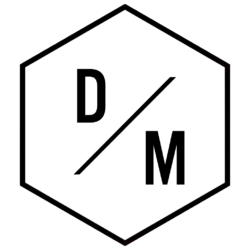In an era marked by rapid technological evolution, the Savannah College of Art and Design (SCAD) has emerged as a pivotal institution bridging the gap between traditional creativity and cutting-edge technology. Their recently unveiled AI Insights report delivers an in-depth exploration into how Artificial Intelligence is reshaping the landscape of creative industries. With a focus on design technology, machine learning, and the visual arts, the report offers valuable perspectives on innovation and the future trajectory of artistic collaboration.
SCAD AI Insights Report: Mapping the Integration of Artificial Intelligence in Creative Industries
The 2025 SCAD AI Insights Report, coordinated by SCADask, SCAD’s premier research team, harnesses data from over 400 survey points, alongside interviews with prominent industry leaders, educators, and artists. This comprehensive study reflects the multifaceted impact of AI across digital art, design technology, and creative collaboration, emphasizing its role as a catalyst rather than a threat within creative professions.
The report dives into key areas where AI integration is accelerating innovation:
- Creative augmentation: AI tools enhance traditional techniques, enabling artists to expand visual narratives with expansive palettes powered by machine learning algorithms.
- Design education evolution: AI reshapes curricula to equip students with adaptable skills emphasizing vision over rote technological mastery.
- Operational efficiency: Creative enterprises report cost reductions through AI-powered process optimization without compromising job security.
Notably, the report underscores a paradigm shift away from AI as a mere technological novelty toward embedded intelligence within everyday creative practices. For detailed perspectives into the profound shift in creative industries, additional insights are available at AI Insights Russell Morgan.
| Aspect | AI Impact | Examples |
|---|---|---|
| Creative output | Expanded visual styles via generative AI | AI-generated digital art in exhibitions, virtual reality environments |
| Design education | Curriculum updates with AI ethics and tools | Workshops incorporating AI tools like Google AI Studio (source) |
| Business operations | Cost efficiency and workforce expansion | AI roles created in creative agencies, process automation |
Artificial Intelligence’s Role in Revolutionizing Design Education at Savannah College of Art and Design
SCAD’s proactive approach to AI integration into its pedagogy represents a notable model in design education. The launch of the 2025 SCADask AI Summit assembled leading voices from Google, Meta, Adobe, and Deloitte, facilitating a cross-industry dialogue centered on the future of AI-driven creativity. This summit spotlighted how educational frameworks are evolving to blend creative intuition with technical agility.
The Dean of the School of Animation and Motion, Dan Bartlett, articulates a core philosophy: “The creative process isn’t anchored in mastering every software. Rather, it demands a flexible skillset with a primary focus on vision and idea realization.” This accentuates the necessity for adaptive education models that prioritize ideation supported by AI-enhanced tools rather than just technical proficiency.
- Adaptive curriculum design: Introducing AI ethics, responsible use, and machine learning fundamentals.
- Project-based learning: Students explore creative scenarios utilizing AI-enhanced tools for digital art and UX design.
- Industry collaboration: Co-creation with corporations harnessing AI innovation in advertising and branding.
These strategies cultivate a new generation of creators well-versed in both traditional and AI-supported methods, preparing them for the dynamic demands of modern creative industries. Exploring AI’s influence on creative education is essential for institutions considering seamless AI adoption; references like academic technologists’ AI teams detail methodologies supporting this transition.
| Curriculum Focus | Objective | Expected Outcome |
|---|---|---|
| AI Ethics and Responsibility | Educate on moral implications of AI in creativity | Responsible AI use among future designers |
| Machine Learning Applications | Hands-on experience with AI tools | Enhanced creative process and technological fluency |
| Creative Collaboration Tools | Team-based projects incorporating AI | Collaborative innovation and problem-solving |
How AI-driven Innovation Enhances Creative Collaboration in Visual Arts and Digital Design
The integration of AI into creative collaboration presents new dimensions for artists and designers, enabling interactivity and idea exchange across previously insurmountable barriers. SCAD’s research identifies AI as a facilitator enhancing insight generation and iterative design processes within visual arts and digital realms.
Among significant outcomes:
- Real-time AI-assisted brainstorming: Platforms enabling dynamic adjustments during the creative workflow.
- Expanded creativity through generative models: AI-generated media such as digital collages, animations, and interactive art pieces.
- Cross-disciplinary synergy: Collaboration across industrial design, branding, and UX utilizes AI to harmonize divergent creative disciplines.
Examples from SCAD student projects illustrate AI’s role in expediting creative iterations and broadening the scope of artistic expression. These findings mirror the broader trends in the AI revolution impacting creative industries, providing practical insights into AI-enhanced teamwork. For an analysis of AI tools’ effectiveness in creative collaboration, see AI Insights: Innovative Solutions.
| Collaboration Element | AI Contribution | Impact on Creative Process |
|---|---|---|
| Idea Generation | Generative AI models suggest diverse concepts | Faster and broader ideation |
| Design Iteration | Real-time adjustments via AI feedback | More refined and experimental outcomes |
| Cross-Disciplinary Exchange | AI bridges language and format gaps | Seamless fusion of multiple creative domains |
Operational Impact of Artificial Intelligence on Creative Industry Businesses and Workforce
The AI Insights report discloses a significant transformation within creative enterprises prompted by AI deployment. Contrary to pervasive fears around job displacement, survey data reveal that two-thirds of industry leaders observe reduction in operational costs, while nearly a quarter have expanded their teams incorporating AI-focused roles.
This shift indicates a pragmatic embrace of AI as an enabler rather than a replacement in creative settings. The strategic incorporation of AI-driven automation and analytics optimizes workflows and introduces novel roles requiring expertise in AI technologies.
- Automated design assistance: Routine and repetitive tasks streamlined by AI, freeing human creativity.
- Data-driven decision-making: AI systems providing insights into market trends and consumer behavior within creative sectors.
- AI-enabled workforce development: Recruitment of specialists focused on AI tool integration and maintenance.
This operational model fosters innovation while preserving creative workforce roles, reinforcing the symbiotic relationship between human ingenuity and machine learning. Businesses interested in exploring AI’s practical effects on workforce and cost metrics may find Business AI Growth Insights highly informative.
| Operational Aspect | AI-Provided Benefit | Business Outcome |
|---|---|---|
| Cost Efficiency | Process automation reduces overhead | Improved profitability |
| Talent Acquisition | Hiring AI specialists expands capabilities | Innovative service offerings |
| Market Insight | Analytics platforms track consumer behavior | Targeted product development |
Industry Trends and Recognition Highlighting AI in Creative Digital Art and Design Technology
The broader industry recognition of AI’s transformative power in creative domains is exemplified by initiatives like the RTIH AI in Retail Awards. Scheduled for September at The Barbican in London, these awards celebrate technology-driven advancements that optimize omnichannel retail experiences through AI innovation. This event reflects the convergence of AI and digital art in real-world applications impacting both consumers and businesses.
The 2025 moment is characterized by AI shedding its “hype” label and becoming an indispensable tool in retail, design, and marketing sectors. Companies that not only adopt AI but ensure its usability have become frontrunners in efficiency and creativity. Among key industry trends are:
- Personalization through AI-generated content improving customer engagement in marketing campaigns and retail environments.
- Inventory optimization leveraging AI analytics to reduce waste and improve supply chain responsiveness.
- Enhancement of human roles using AI to augment rather than replace retail staff, improving operational dynamics.
This landscape illustrates a significant transformation fuelled by Design Technology and AI-driven Digital Art solutions, with evidence pointing towards sustained growth in AI’s role across creative industries. For complementary market perspectives, see the overview at AI Innovation in Packaged Goods.
| Trend | Impact | Example Application |
|---|---|---|
| AI Personalization | Enhanced consumer engagement | Custom AI-driven marketing collages |
| Inventory Management | Improved supply chain & reduced waste | AI-powered stock forecasting tools |
| Human Role Enhancement | Support for retail workforce capabilities | AI-enabled employee assistance software |


